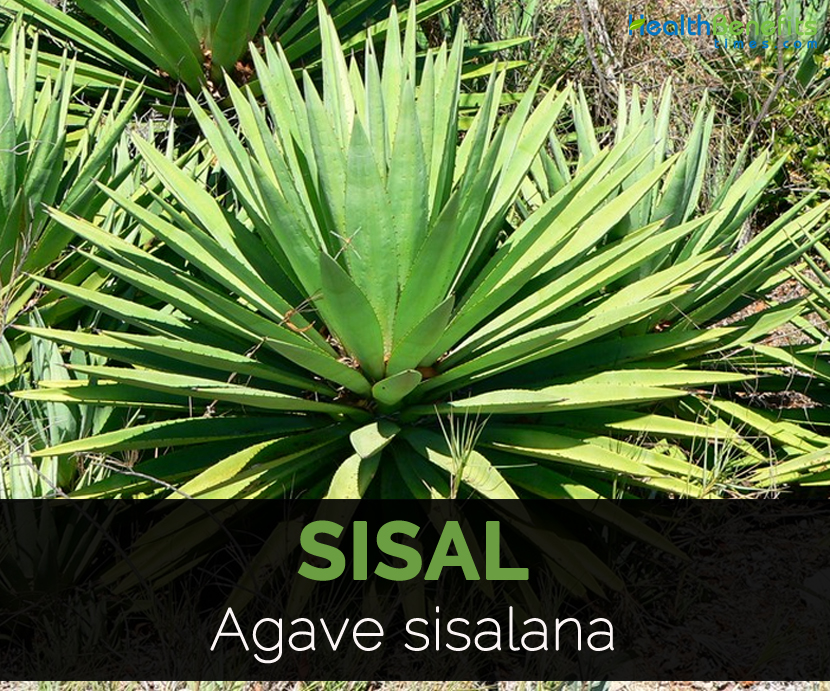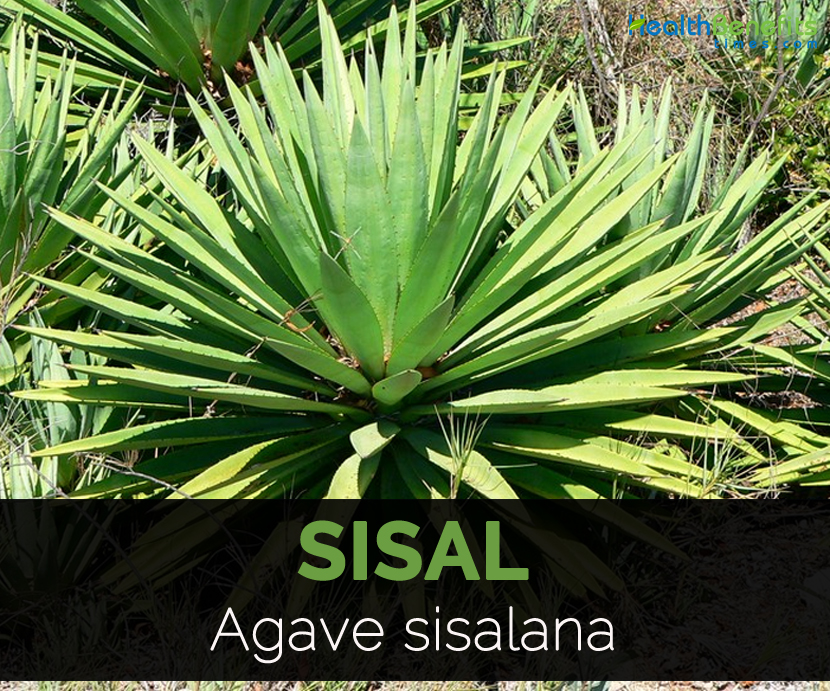| Sisal Quick Facts | |
|---|---|
| Name: | Sisal |
| Scientific Name: | Agave sisalana |
| Origin | The origin of Sisal is in Central America probably in southern Mexico. |
| Colors | Green, black |
| Shapes | Ellipsoid capsule, 6 cm long, 2-2.5 cm diameter |
Plant
Agave sisalana is a robust and monocarpic herbaceous perennial plant having short thick stem measuring 120 cm by 20 cm. It has basal rosette of leaves which is 1.5 to 2 meters high. When young, leaves are glaucous, linear to lanceolate, straight and are about 100 to 150 cm long by 10 to 15 cm wide. Inflorescence is 2 to 8 meters tall, a panicle on a long peduncle and branching at upper half. Braches are widely spreading measuring 30 to 100 cm by 2 cm. Each branch bears 40 flowers and inflorescence branches after anthesis bears numerous bulbils. Flowers are erect, protandrous, strongly odorous and pale yellowish green. Tube is 1 to 2 cm long with obovate to oblanceolate lobes on an inner side of the top with tuft of haris. Fruit is an ellipsoid capsule in green that turns black when matured and contains 150 seeds. Seeds are thin, flat, black and rounded to deltoid.
Uses
Sisal is the leading material for agricultural twine due to its durability, strength, ability to stretch, resistance to deterioration in saltwater and affinity for certain dyestuffs. Besides twines, ropes and general cordage, Sisal is used in specialty paper, buffing cloth, dartboards, geotextiles, filters, carpets, mattresses, Macrame and wire rope cores. It is used as environmentally friendly strengthening agent to replace fiberglass, asbestos in composite materials in various uses including automobile industry. Low grade fiber has high content of cellulose and hemicelluloses which is processed by paper industry. Medium grade fiber is used by cordage industry for making baler, ropes and binder twine. After treatment high grade fiber is converted into yarns and used by carpet industry. Cat scratching posts, spa products, rugs, lumbar support belts, cloths, slippers and disc buffers are the products made from Sisal fiber.
Traditional uses
- Leaf juice is used in Northern Morocco as a wash for treating skin diseases.
- It is used for pulmonary tuberculosis, syphilis and jaundice.
- The salted decoction of central bud is used in Bahamas for jaundice.
- In Central America, the plant sap is used as a poultice for wounds.
- Internally the plant is used for treating indigestion, constipation, dysentery and jaundice.
Precautions
- Raw sap is irritating to eyes and skin.
- Sensitive individuals might get allergic reactions with mattresses.
How to Eat
- The syrup is used as a substitute to sugar in cooling.
- Sap exuding from excised flower stalks is used to make a beer and a brandy.
- Bake the central buds with corn oil and salt it and consume it as a side dish.
Other Facts
Brazil is the largest producer of sisal producing 113,000 tonnes.
References:
https://www.itis.gov/servlet/SingleRpt/SingleRpt?search_topic=TSN&search_value=182694#null
https://www.cabi.org/isc/datasheet/3855
https://en.wikipedia.org/wiki/Sisal
Comments
comments

